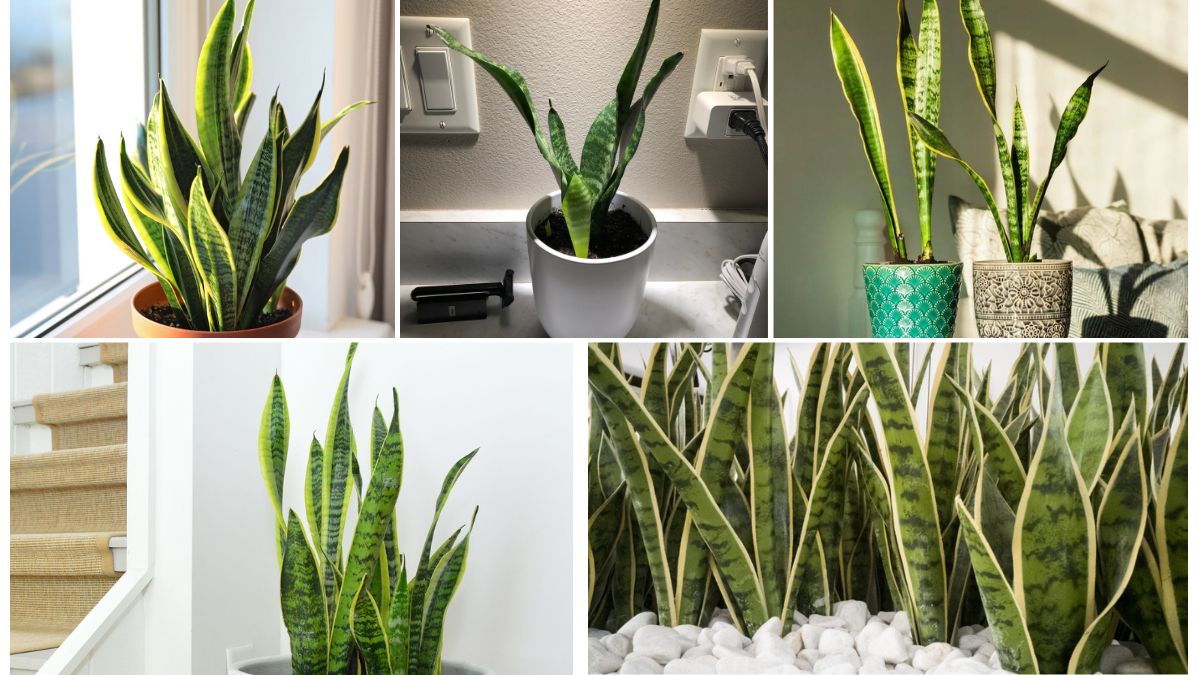The snake plant (Sansevieria), also known as mother-in-law’s tongue, is one of the most popular houseplants in the world, admired for its bold, architectural leaves and nearly indestructible nature. But despite its reputation for surviving just about anywhere, providing the right amount and type of light can mean the difference between a healthy, thriving plant and one that simply survives. So, how much light does a snake plant really need?
Understanding the Snake Plant’s Native Habitat
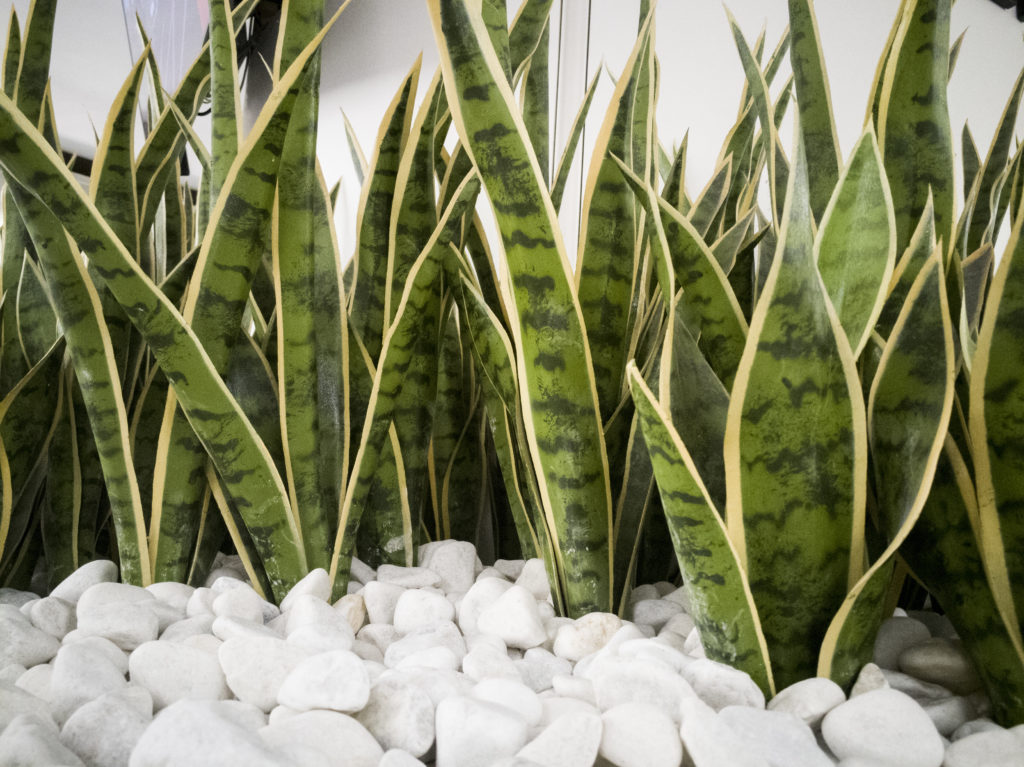
Snake plants are native to tropical West Africa, where they grow under full sun, dappled shade, and sometimes low light conditions. This natural versatility makes them incredibly adaptable indoors. In the wild, they often thrive in hot, arid climates, where sunlight is plentiful, but they’re also found beneath trees and other vegetation, experiencing periods of shade.
Light Tolerance vs. Light Preference
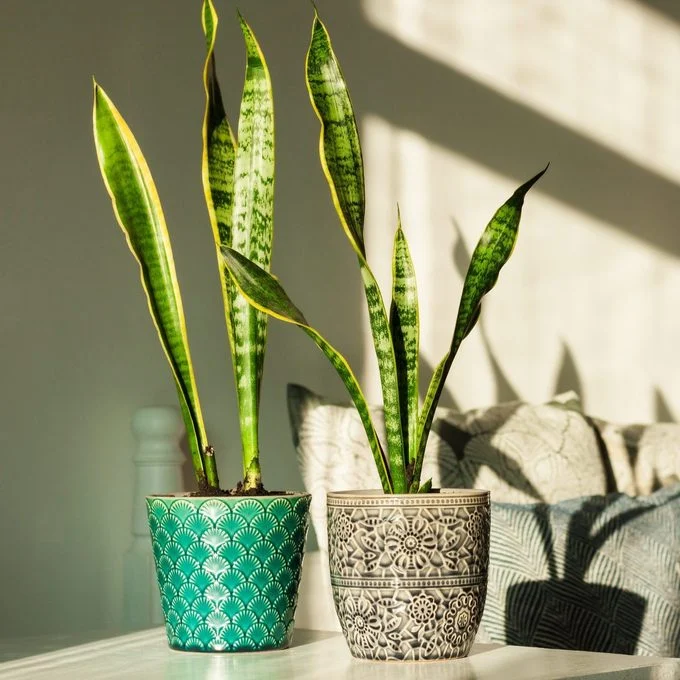
It’s important to differentiate between what the snake plant can tolerate and what it actually prefers.
- Tolerance: Snake plants are remarkably resilient. They can survive in low-light areas like office corners or windowless bathrooms.
- Preference: For optimal growth, snake plants prefer bright, indirect light. This light condition promotes stronger leaves, richer variegation, and even rare flowering in mature plants.
Ideal Light Conditions for Snake Plants
Here’s how different lighting conditions affect snake plants:
- Bright Indirect Light: This is the sweet spot. A place where the plant gets filtered sunlight (like near an east-facing window or a few feet from a south-facing window with sheer curtains). This encourages strong, upright growth and helps the plant retain its vibrant green or variegated coloring.
- Direct Sunlight: While snake plants can handle direct sun for a few hours a day, especially morning sunlight, prolonged exposure to harsh afternoon sun may scorch the leaves. If placed in a south or west-facing window, consider using sheer curtains to diffuse the light.
- Low Light: In dim areas, snake plants will grow very slowly and may become leggy over time. The leaf coloration may fade, and in extreme low light, the plant might enter dormancy or show signs of stress, like drooping or soft leaves.
Signs Your Snake Plant Is Getting Too Much Light
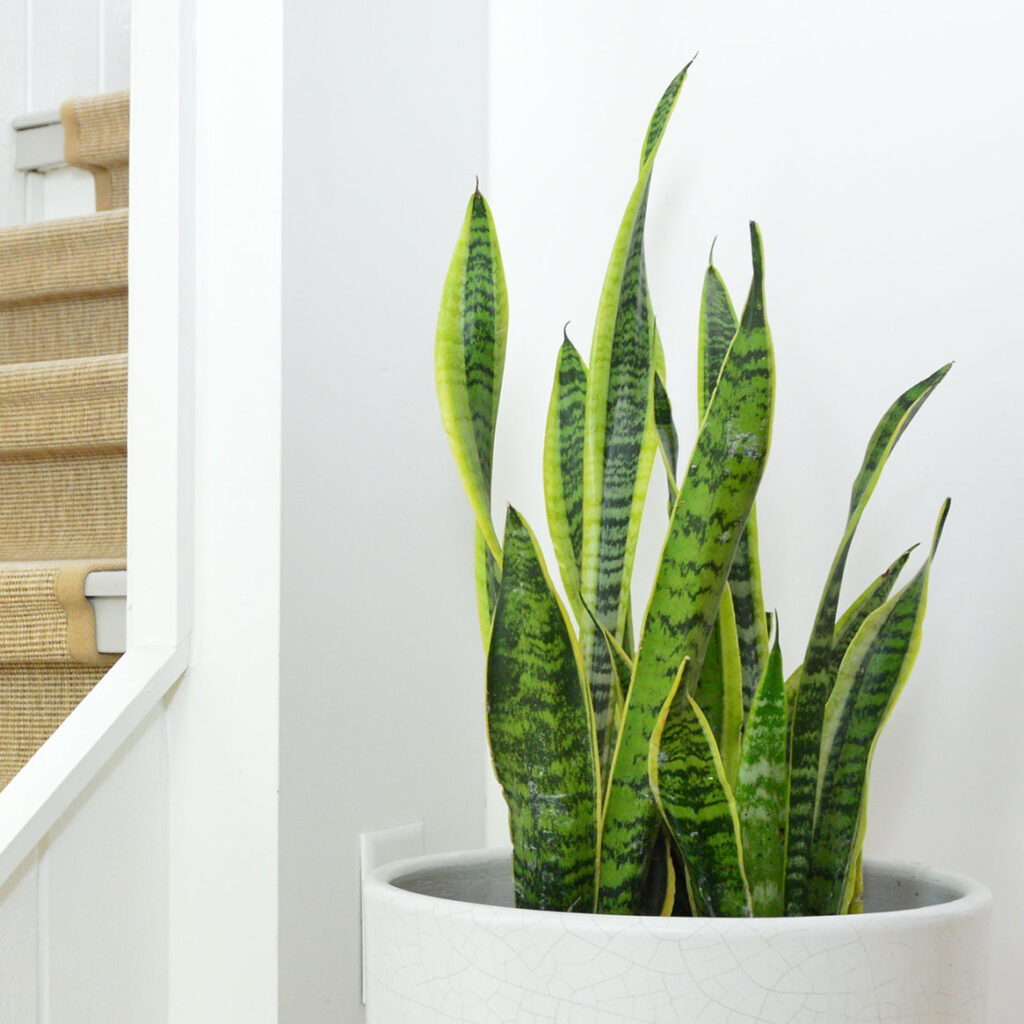
Although robust, snake plants can still suffer if the light is too intense. Look out for these signs:
- Brown or scorched leaf tips
- Bleached patches on leaves
- Curled or drooping leaves
- Faded variegation
These symptoms often occur when a snake plant is placed too close to a south-facing window without protection, especially during the peak summer months.
Signs of Insufficient Light
On the other end of the spectrum, inadequate light can also affect the plant’s health. Warning signs include:
- Slow or no new growth
- Drooping or wrinkled leaves
- Pale or yellowing foliage
- Soil taking longer to dry out
Snake plants in low light are also more susceptible to overwatering issues since the soil remains moist for longer periods.
Choosing the Best Location in Your Home
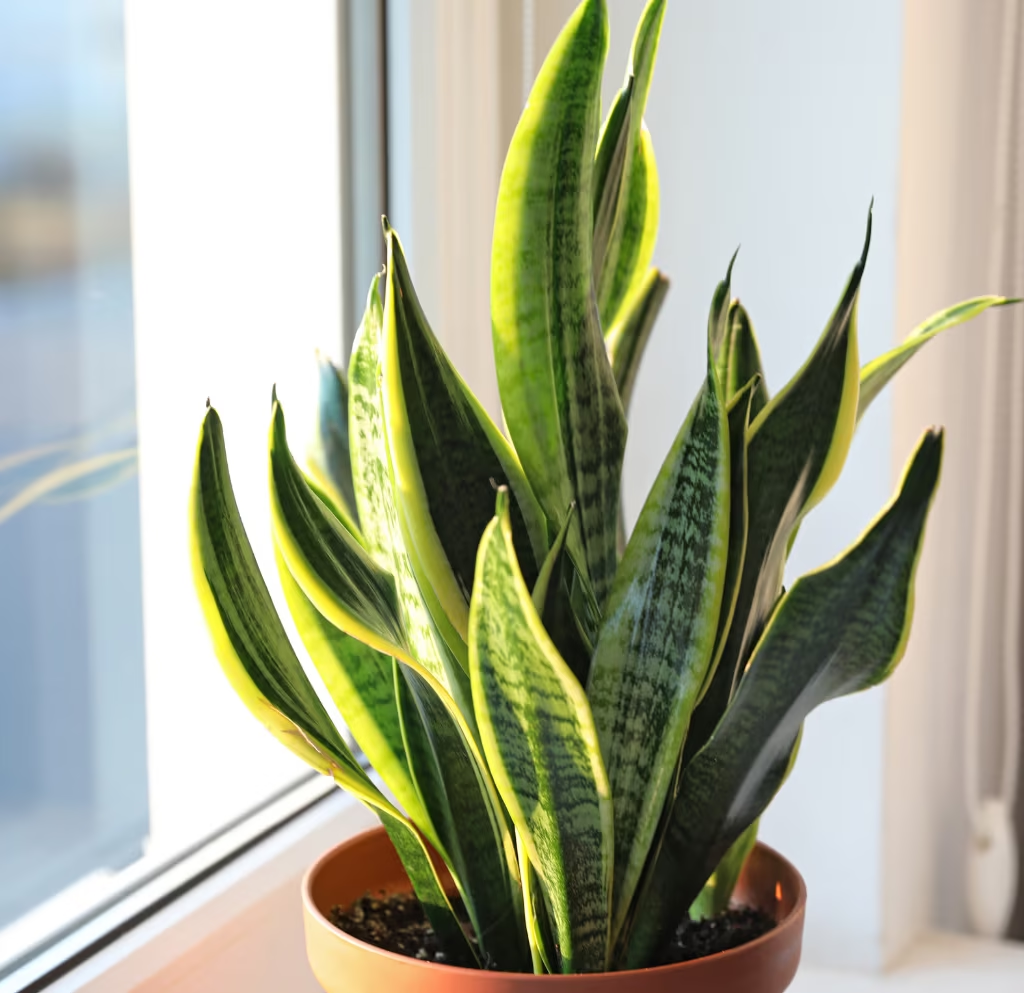
For the best results, place your snake plant in a location that offers:
- Bright but indirect sunlight for 6–8 hours daily
- A bit of early morning or late afternoon sun is okay
- Protection from intense midday rays (especially in hot climates)
Some great indoor locations include:
- Near east or north-facing windows
- A few feet away from a bright west or south-facing window
- On well-lit patios or shaded balconies (for outdoor placement)
Using Artificial Light for Snake Plants
If you don’t have access to natural sunlight, especially in offices or apartments, snake plants can do well under artificial lighting. Use full-spectrum fluorescent or LED grow lights.
Tips for success:
- Choose grow lights that mimic the natural sunlight spectrum.
- Place the light source 12–18 inches above the plant.
- Keep the lights on for about 10–12 hours a day to mimic natural daylight.
Even under artificial lights, snake plants will grow slowly, but steadily, and maintain good health.
How Seasonal Changes Affect Lighting Needs
Seasonal shifts in daylight hours and intensity impact all indoor plants, including snake plants. In winter, days are shorter, and light is less intense, so you might need to:
- Move your plant closer to a window
- Rotate it regularly to ensure even light exposure
- Reduce watering since lower light slows growth and water uptake
In summer, you may need to move the plant slightly farther from the window or provide sheer curtains to protect it from intense heat.
Snake Plant Varieties and Light Sensitivity
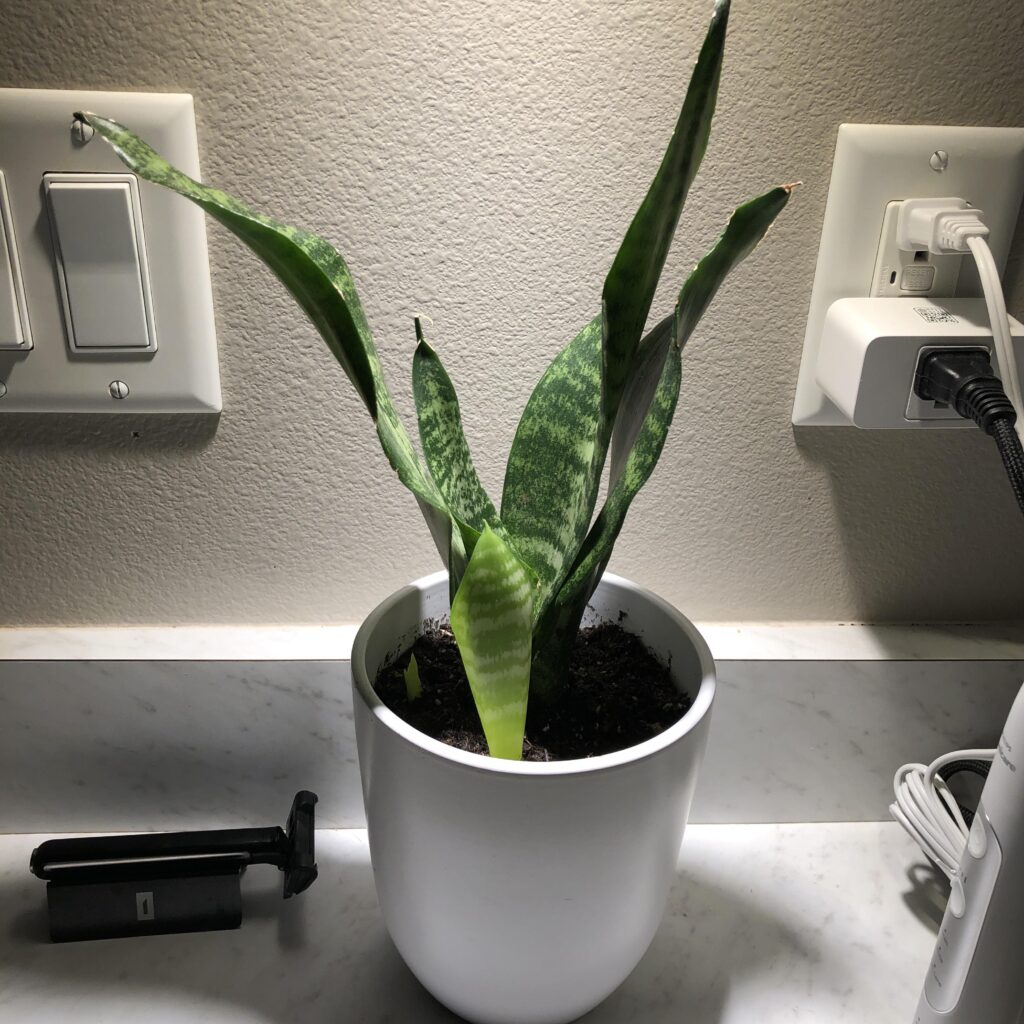
Different varieties of Sansevieria may react differently to light:
- Sansevieria trifasciata ‘Laurentii’ (green with yellow edges): Needs bright, indirect light to maintain its variegation.
- Sansevieria cylindrica (round, spear-like leaves): Can handle more direct light than flat-leaf types.
- Sansevieria moonshine (silvery pale green): May lose its unique color in low light and revert to greener shades.
- Black Coral and Zeylanica: Handle low light better but prefer filtered light to thrive.
Understanding the variety you have can help tailor your lighting strategy more effectively.
Light and Flowering in Snake Plants
Although rare, snake plants can produce fragrant white flowers when mature and under ideal conditions. Sufficient light is one of the most important factors for encouraging blooming. If you want to see flowers, place your snake plant in a location that offers bright, indirect light year-round and avoid frequent repotting (as slightly root-bound plants are more likely to flower).
Conclusion: Light Matters More Than You Think
While snake plants are famously forgiving, they are not invincible. Giving your plant the right amount of light can significantly improve its health, appearance, and lifespan. Aim for bright, indirect light for best results. If that’s not possible, choose the best alternative — a well-lit spot with artificial lights or filtered natural light.
Whether you’re growing your snake plant in an apartment corner, a sunny window ledge, or a low-lit office cubicle, understanding and adjusting light conditions is the key to helping this low-maintenance beauty thrive.
